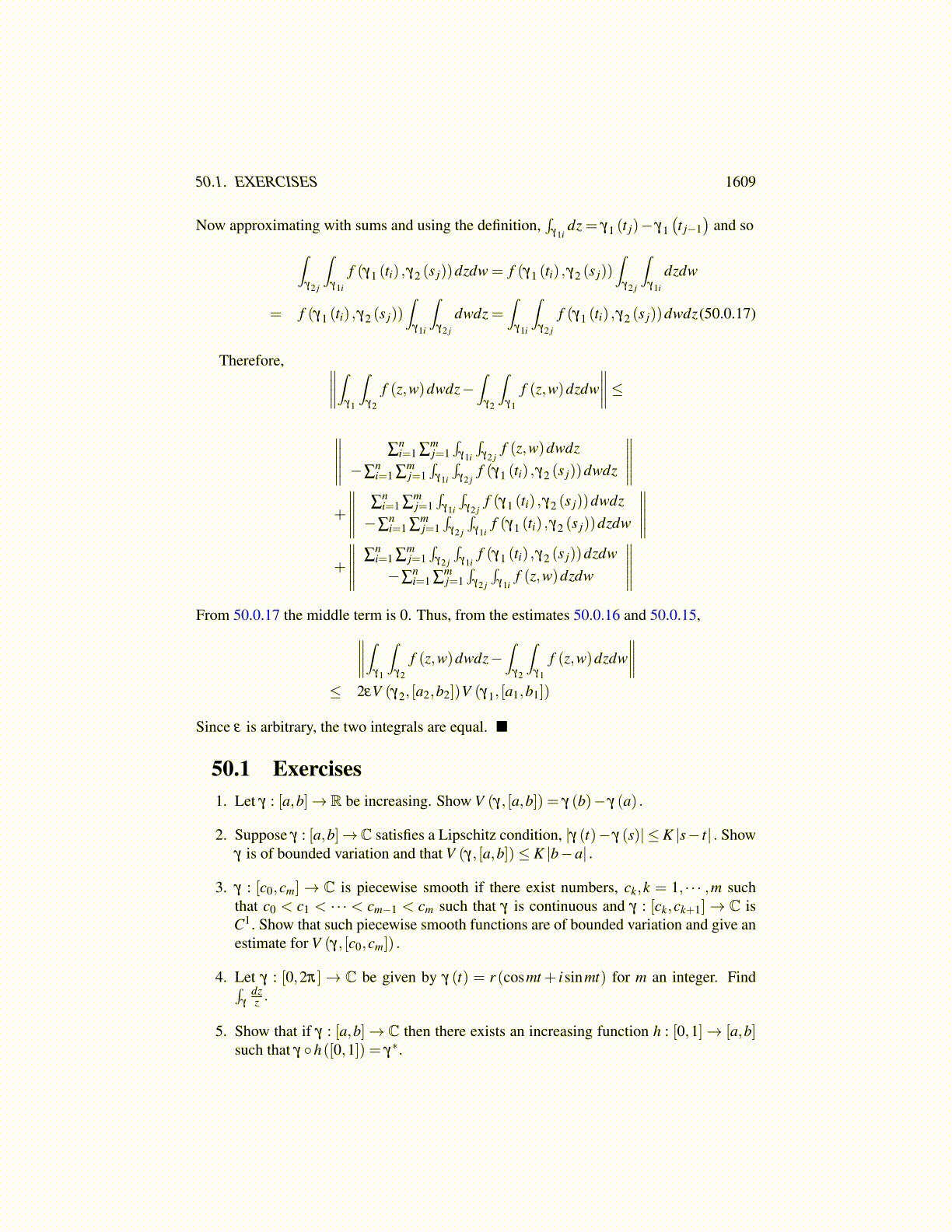
1609
The following lemma is useful and follows quickly from Theorem 50.0.3.
Lemma 50.0.11 In the above definition, there exists a continuous bounded variation func-tion, γ defined on some closed interval, [c,d] , such that γ ([c,d]) = ∪m
k=1γk ([ak,bk]) andγ (c) = γ1 (a1) while γ (d) = γm (bm) . Furthermore,∫
γ
f (z)dz =m
∑k=1
∫γk
f (z)dz.
If γ : [a,b]→ C is of bounded variation and continuous, then∫γ
f (z)dz =−∫−γ
f (z)dz.
Re stating Theorem 50.0.7 with the new notation in the above definition,
Theorem 50.0.12 Let K be a compact set in C and let f : Ω×K→ X be continuous for Ω
an open set inC. Also let γ : [a,b]→Ω be continuous with bounded variation. Then if r > 0is given, there exists η : [a,b]→ Ω such that η (a) = γ (a) , η (b) = γ (b) ,η is C1 ([a,b]) ,and ∣∣∣∣∫
γ
f (z,w)dz−∫
η
f (z,w)dz∣∣∣∣< r, ||η− γ||< r.
It will be very important to consider which functions have primitives. It turns out, it isnot enough for f to be continuous in order to possess a primitive. This is in stark contrast tothe situation for functions of a real variable in which the fundamental theorem of calculuswill deliver a primitive for any continuous function. The reason for the interest in suchfunctions is the following theorem and its corollary.
Theorem 50.0.13 Let γ : [a,b]→C be continuous and of bounded variation. Also supposeF ′ (z) = f (z) for all z ∈Ω, an open set containing γ∗ and f is continuous on Ω. Then∫
γ
f (z)dz = F (γ (b))−F (γ (a)) .
Proof: By Theorem 50.0.12 there exists η ∈ C1 ([a,b]) such that γ (a) = η (a) , andγ (b) = η (b) such that ∣∣∣∣∣∣∣∣∫
γ
f (z)dz−∫
η
f (z)dz∣∣∣∣∣∣∣∣< ε.
Then since η is in C1 ([a,b]) ,∫η
f (z)dz =∫ b
af (η (t))η
′ (t)dt =∫ b
a
dF (η (t))dt
dt
= F (η (b))−F (η (a)) = F (γ (b))−F (γ (a)) .
Therefore, ∣∣∣∣∣∣∣∣(F (γ (b))−F (γ (a)))−∫
γ
f (z)dz∣∣∣∣∣∣∣∣< ε
and since ε > 0 is arbitrary, this proves the theorem.